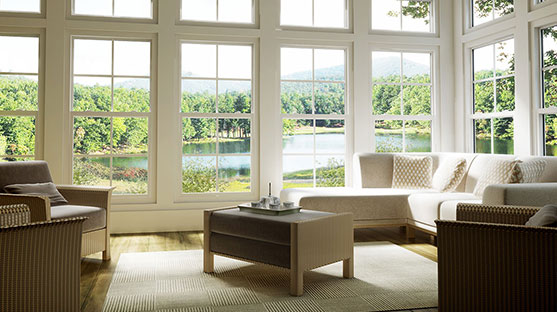Lower my Energy Bills With a New Window
An important consideration for both existing and new homes is an energy-efficient window. Heat loss and heat gain through windows are responsible for around 25% –30% of the heating and cooling energy usage of homes.
If you are choosing windows for new construction or to replace existing windows, it is important to choose the most efficient windows you can afford and that work best in your climate.
If your existing windows are in good condition, taking steps to decrease energy loss through windows can make your home more comfortable and save you money on energy bills.
You have two broad options if you are hoping to reduce the amount of energy lost through your windows and improve the comfort of your own home:
- Update existing windows to improve efficiency
- Replace your windows.
Update existing Windows to improve efficiency
If your windows are in good condition, taking steps to enhance their efficiency may be the most cost-effective option to boost the comfort of your home and save money on energy costs. Here are some things you can do to enhance the efficiency of your existing windows:
- Check existing window for air leaks
- Medical and weather belt.
- Add window treatments and coverings.
- Add windows or storm panels
- Add the solar control film
- Add exterior shades, such as canopies, exterior blinds, or overhangs.
- With any efficiency improvements, take steps to ensure appropriate installation and check again for air leaks after you have made the upgrade.
Replace your Window
If you decide to replace your windows, you will have to make some decisions about the type of windows you buy and the type of replacement you will do.
You may have the opportunity of replacing the windows in their existing frame; Discuss this option with your vendor and window installer to find out if it will work for you.
You will also have to choose which features you want in your windows. You will need to choose on the following:
- Types of frames
- Type of polishing
- Gas fillings and separators
- Types of operation
Selection process
In addition to choosing the type of window, you should also consider the modeling, use, and labeling of power, warranties, and proper installation.
First, when buying new windows look for the ENERGY STAR label. Then review the ratings on the energy performance label from the National Windshield Assessment Council (NFRC) to find the most efficient windows for your needs.
NFRC ratings are included in all ENERGY STAR-certified windows and provide a reliable way to determine the energy properties of a window and compare products.
Efficient Windows Collaboration gives a choosing process for both new construction windows and replacement windows:
- The selection process for window replacement
- The process of selecting windows for new constructions
Tips for choosing window
- Request ENERGY STAR and NFRC tags.
- In colder climates, consider choosing gas-filled windows with low gear to reduce heat loss. In warmer climates, choose cladding windows to reduce heat gain.
- For better thermal resistance in colder climates, pick a low U factor; factor U is the speed at which a window conducts the flow of non-solar heat.
- Look for a low solar heat growth coefficient (SHGC). SHGC is a measure of solar radiation received through a window. Low SHGCs decrease heat gain in warmer climates.
- Choose windows with low U factors and low SHGC to maximize energy savings in mild climates with cold and hot seasons.
- Look for the U-factors and SHGCs of the whole unit, rather than the U-center glass factors and SHGCs. Integer numbers more accurately reflect the energy performance of the entire product.
Installing
Even the most energy-efficient window must be correctly installed to ensure energy efficiency and convenience. Have your windows installed by trained professionals according to the manufacturer’s instructions; otherwise, your warranty may be invalid.
Window installation varies depending on the type of window, house construction (wood, masonry, etc.), exterior cladding (wooden siding, mortar, brick, etc.), and type (if any) of weather – limiting barrier.
Windows, ignition, and air closure have to be installed according to the manufacturer’s recommendations to perform correctly.



